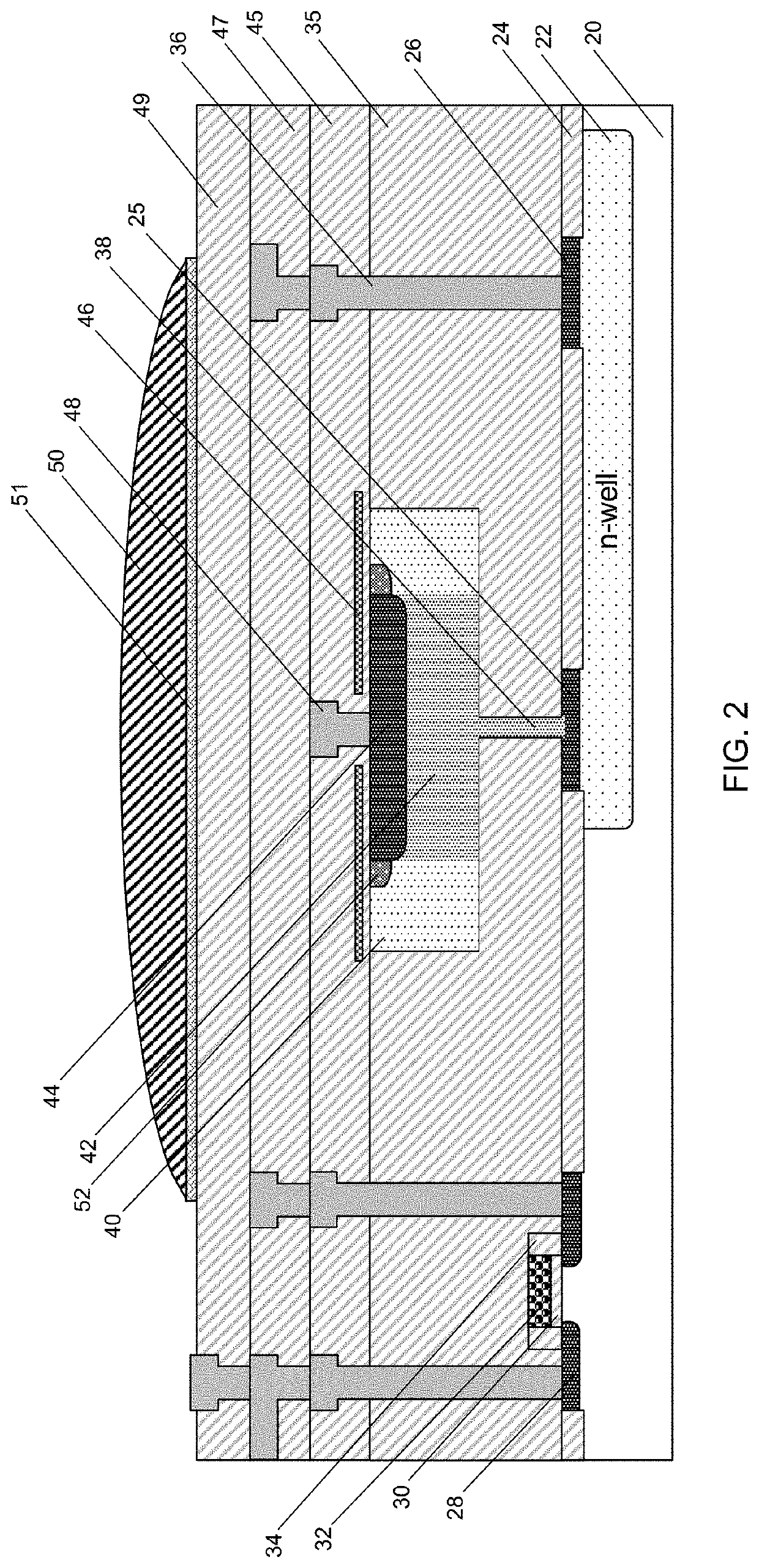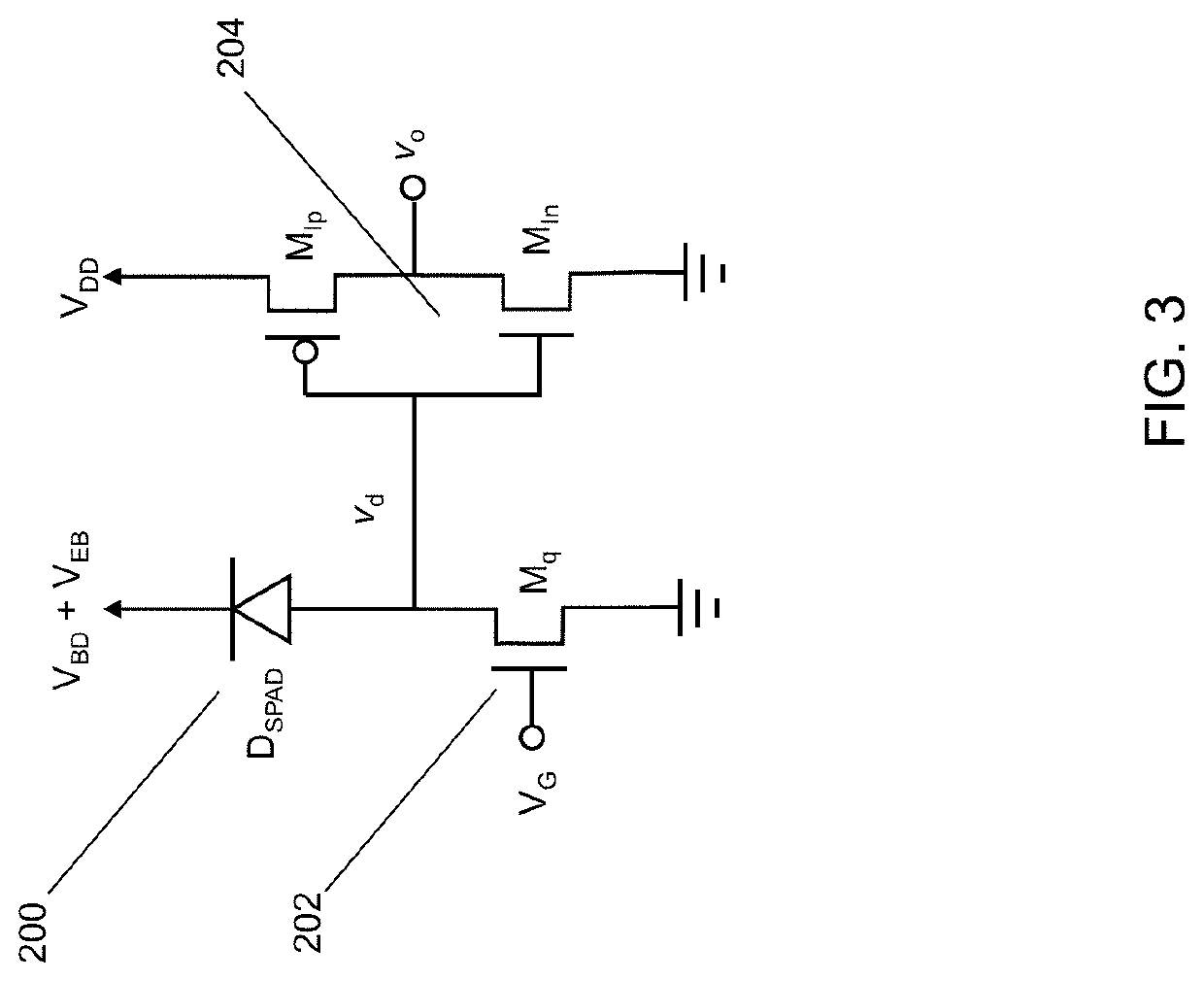High Dynamic Range Single Photon Avalanche Detector Array on Silicon with Circuitry for Light Detection and Ranging
- Summary
- Abstract
- Description
- Claims
- Application Information
AI Technical Summary
Benefits of technology
Problems solved by technology
Method used
Image
Examples
Embodiment Construction
[0012]The fabrication of a germanium single photon avalanche detector (SPAD) array begins with a conventional silicon complementary metal oxide semiconductor (CMOS) process and is interrupted after the formation of the first metal via. Nearly defect free germanium isolated regions are formed through selective epitaxial growth and chemical mechanical polishing on the CMOS silicon wafer.
[0013]The SPAD is made with CMOS compatible steps including selective epitaxial growth, ion implantation, and low temperature dielectric deposition. The high aspect ratio seed trench is formed on an n-well region formed in the substrate and serves as the cathode contact to the SPAD. The Ge seed epitaxial growth is in-situ doped with phosphorous to ensure electrical continuity to the n-well region. The n-well region extends within the substrate underneath the Ge region allowing it to be contacted with an n+ source / drain region and backend metallization as conventionally achieved to CMOS transistors.
[001...
PUM
 Login to View More
Login to View More Abstract
Description
Claims
Application Information
 Login to View More
Login to View More - R&D
- Intellectual Property
- Life Sciences
- Materials
- Tech Scout
- Unparalleled Data Quality
- Higher Quality Content
- 60% Fewer Hallucinations
Browse by: Latest US Patents, China's latest patents, Technical Efficacy Thesaurus, Application Domain, Technology Topic, Popular Technical Reports.
© 2025 PatSnap. All rights reserved.Legal|Privacy policy|Modern Slavery Act Transparency Statement|Sitemap|About US| Contact US: help@patsnap.com



